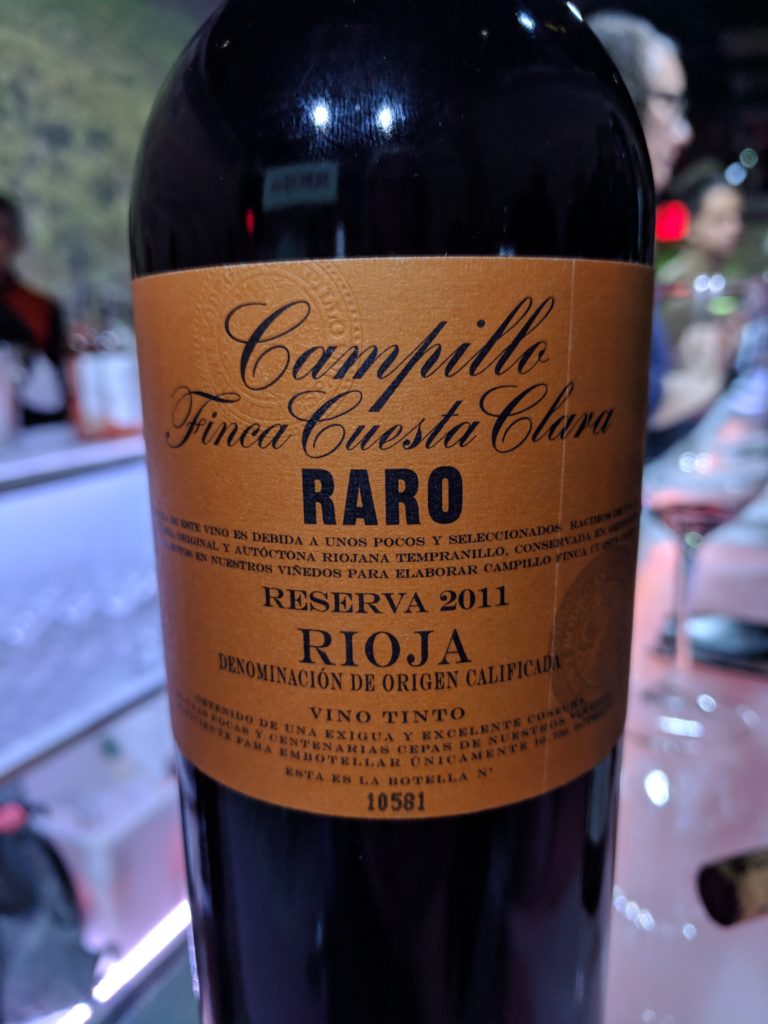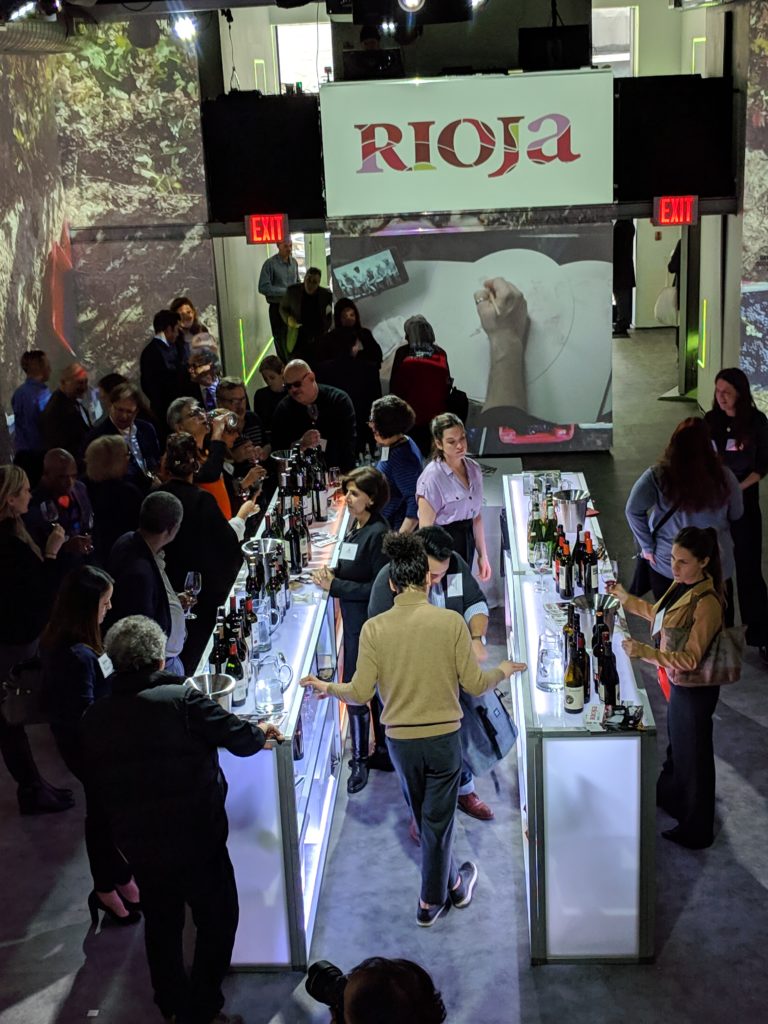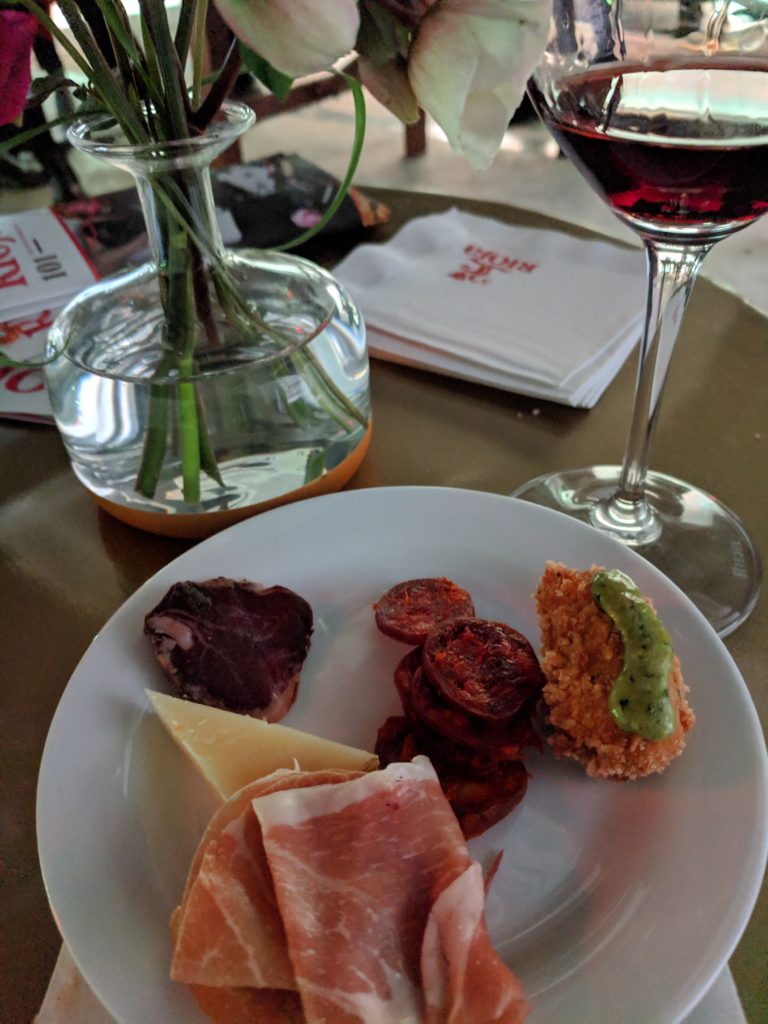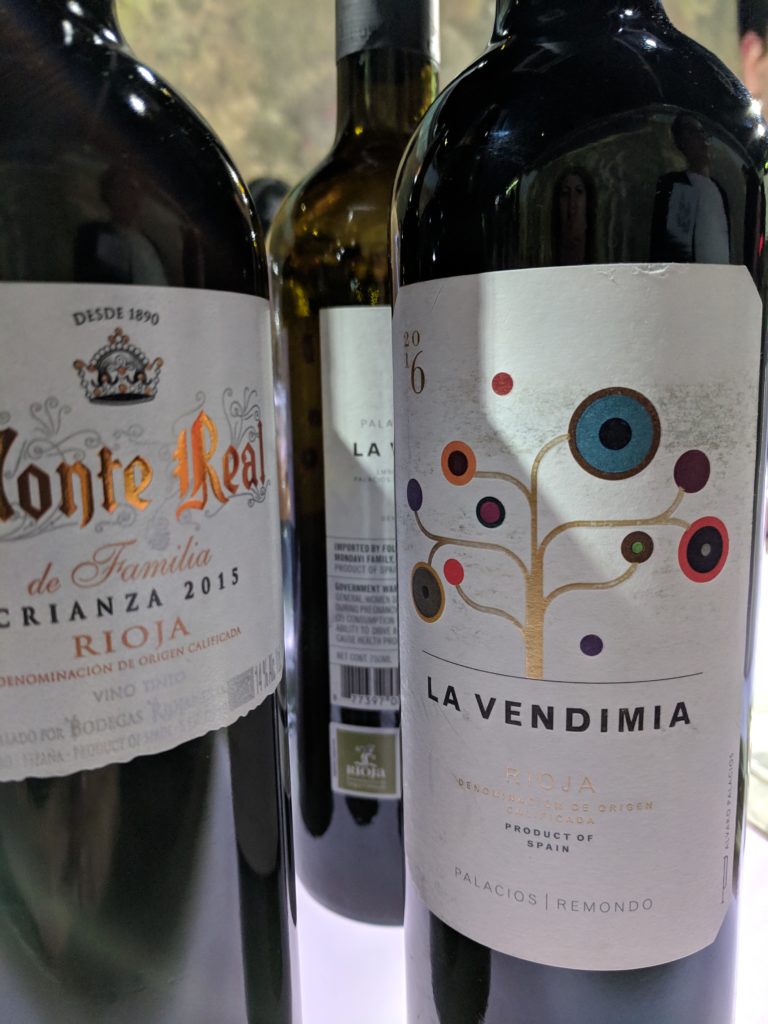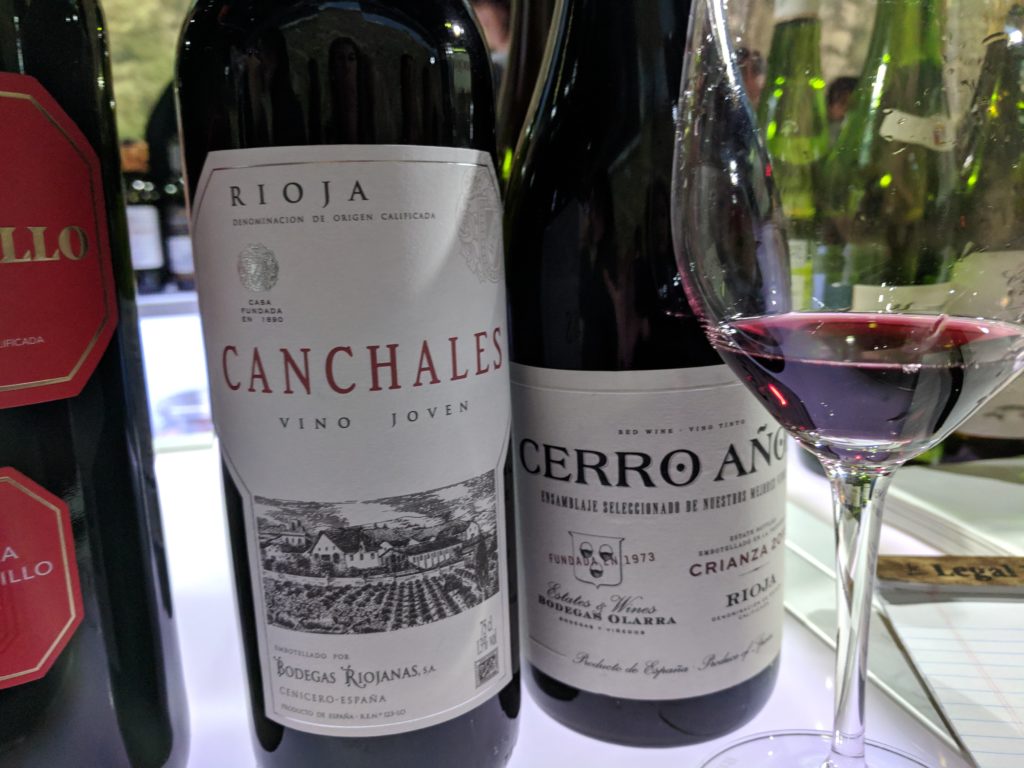
Among Spain’s most vaunted wines, Rioja wines offer up “something for everyone.” And, while that phrase comes straight from the “Rioja 101” brochure I received at a recent Rioja tasting, I believe it to be much more than marketing hype. The wines are produced as white, red, or rosé, covering the full (wine) color spectrum, as well as in a range of styles.
White wines primarily feature local grape varieties such as Viura, Garnacha Blanca and Verdejo, while rosés are generally made from Garnacha or Tempranillo. The red wines may be produced from one or more of the following varieties: Tempranillo, Garnacha, Graciano and Mazuelo. Aside from the differing blends, the wines vary based on length of aging and use (or lack thereof) of wood vessels.
In particular, wines that spend long aging in wood — typically American oak — qualify for specific labeling terms based on the Rioja regulations. Specifically, non-oaked/unaged wines carry no additional terminology on the label. Those wines bearing the designation “Crianza” have been aged for at least three years with one in cask. Reserva wines spend three years aging with one in wood and then an additional six months in bottle. Grand Reserva wines, usually only produced in top vintages, spend a minimum of five years aging with two of those in oak and an additional two in bottle before release. As minimums, winemakers are permitted to exceed these regulations and often do. Whites and rosés follow similar, but shorter, aging regimens within each aging category.
What this means for you, as a consumer, is that you will find a variety of Rioja options depending upon your palate and other preferences. In general, the unoaked wines will be fresher, more fruit forward and potentially more simple, but equally delicious. Conversely, the longer aged wines typically offer oaky/woody notes, often accompanied by notes of vanilla and spice, along with more robust flavor characteristics with firmer tannins and less fruit, but still remain fresh.
More recently, several new zone classifications have been created and now don labels as well. Vino de Zona permits wines that are produced exclusively in one of the three zones (Rioja Alta, Rioja Alavesa and Rioja Oriental) to designate this on the label. Similarly, wines from a particular village or town (Vino de Municipio) may bear that name if nearly all of the grapes come from that particular area. And finally, Vinedo Singular is a new term used for wines produced from single vineyard that is at least 35 years old and must meet other quality requirements.
At the tasting mentioned above, I had the opportunity to taste among whites, rosés and reds from a variety of different producers and, not surprisingly, found numerous wines to enjoy. In addition to their food friendly versatility, Riojas are also well priced, particularly among older wines and offer good value. So, the next time you are looking for great wine, look no further than Rioja. You’re sure to find something for everyone!
[For additional information on Rioja, please see my previous stories on CVNE, Bodegas Beronia and Vintae.]
Among my favorites of the tasting were:
CVNE Monopole Rioja Blanco 2017, Rioja, Spain, $15 – rich, full-bodied and complex with long length.
Muriel Fincas de la Villa Blanco 2017, Rioja, Spain, $15 – fresh, with citrus and pear notes.
Faustino VII Rioja Rosado 2018, Rioja, Spain, $11 – slight floral nose with notes of under-ripe strawberries.
Palacios Remondo La Vendimia Rioja 2016, Rioja, Spain, $16 – beautiful nose, with balanced, ripe fruit and long length.
Bodegas Taron Taron Reserva 2006, Rioja, Spain, $18 – well integrated tannins, herbal and floral notes, with rich concentrated fruit and a slight balsamic character.
Bodegas Olarra, Cerro Anon Gran Reserva 2009, Rioja, Spain, $17 – tart, berries, spice and wood, concentrated, long length.
Bodegas Campillo Gran Reserva 2009, Rioja, Spain, $35 – Produced by the daughter of Faustino, fresh with lots of herbaceous notes, long length.
Faustino Barrel Select Gran Reserva 2001, Rioja, Spain, $50 – beautifully complex nose, spice, fruit, herbs, stunning, long length.

